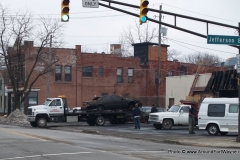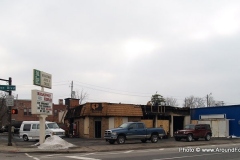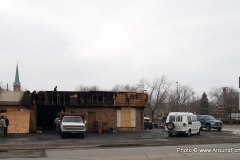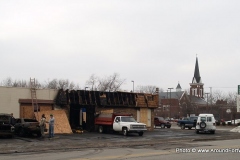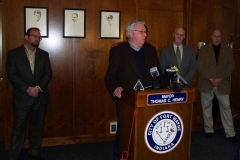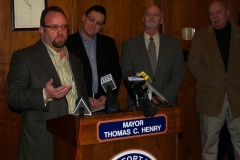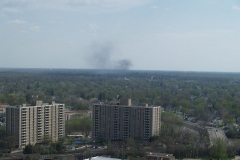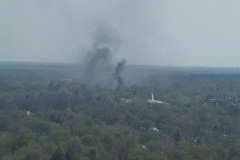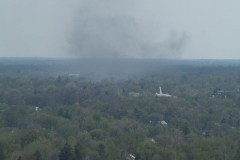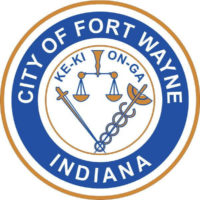
News release from the City of Fort Wayne:
Mayor Henry reemphasizes importance of effort to enhance Fort Wayne as jobs and quality of life leader
Annexation fiscal plan to City Council on Tuesday
(April 22, 2016) – Mayor Tom Henry’s administration today provided an update on the North IV annexation plan that would add nearly 23 square miles and approximately 22,000 people in an effort to continue the growth and positive momentum being experienced in Fort Wayne.
The next step in the process is the introduction of the annexation fiscal plan to City Council on Tuesday, April 26. The fiscal plan includes data covering the annexation area, service provision requirements and fiscal impacts of the annexation on the City of Fort Wayne, taxpayers and Allen County taxing units.
Tuesday’s meeting will include a presentation by the City administration on the fiscal plan and a request of City Council to introduce the fiscal plan for discussion and possible approval at City Council’s meeting on Tuesday, May 10. If the fiscal plan is adopted, it doesn’t represent the final vote on annexation. It’s a requirement as part of the overall annexation process. The annexation ordinance will be introduced in May. A public hearing on the annexation ordinance will occur in July with an expected final vote on the annexation ordinance to take place in August. If approved, the annexation would go into effect on January 1, 2017.
“It’s vital for cities to grow, and this annexation would provide Fort Wayne with a tremendous opportunity to enhance our ability to thrive and succeed as a community moving in the right direction,” said Mayor Henry. “The annexation plan isn’t about funding downtown development projects. This is about sustaining our entire City as a place where businesses and residents want to invest. We must be committed to enhancing job and economic development opportunities and maximizing our ability and right to annex urban and suburban areas that meet the growth plan criteria as locations that are suitable to be annexed to be part of our City.”
Highlights of benefits of annexation:
- Enhanced public safety services – faster fire response times; 15 new firefighters; a new fire station to be built; increased police protection services, including 18 new police officers
- Residents could save as much as $20 per month on garbage and recycling services
- Lower rates for City Utilities water and sewer services – 15% reduction for water and 25% reduction for sewer
- One out of four property owners would see no property tax increase
- Enhanced snow plowing services
- Leaf pickup
- Upgrades to local streets and roads in poor and very poor conditions
- Additional street lighting to City of Fort Wayne standards
The City recognizes other taxing units would be impacted by annexation. Financial impacts on schools and other taxing units would not occur until 2018. The City is committed to collaborating as a community to encourage our area legislative delegation to take action at the Indiana General Assembly in the 2017 session to provide schools and local government units with flexible revenue-generating options.
In addition, the City has been working with property owners and City Councilman Dr. John Crawford to address concerns regarding the preservation of the rural character of some of the properties within the North IV annexation area. Some of the specific concerns that have been raised include the City’s ordinances regulating the discharge of firearms, open burning and noise. The City is currently reviewing the relevant ordinances and determining whether or not reasonable exceptions can be made for properties that are rural in nature.
North IV annexation boundaries are Gump and Hursh roads to the north, City of Fort Wayne limits to the south, Schwartz Road to the east, and Dunton Road to the west. Portions of St. Joseph, Perry, Cedar Creek, and Milan townships are part of the annexation area.
The proposed North IV annexation is part of a progression of annexations north of the current boundary lines. As the urban area expands and more development occurs, the City gradually annexes to capture the urban growth. State law recognizes that municipalities need a way to capture urban growth that surrounds their boundary lines. For decades, leaders have worked to ensure the City limits reflect the population of the urban area.
The ability to annex recognizes that many residents benefit from a city’s streets, police and fire protection, parks, and water and sewer utilities. Annexation also creates greater tax equity because more of the residents who benefit from living near a large city help share the costs of maintaining that city and its services.
The majority of properties in the proposed annexation area are connected to City of Fort Wayne water and/or sewer services. As part of the agreement to connect to City sewer infrastructure, the majority of properties are covered by a document that waives a property owner’s rights to challenge annexation. The documents that contain these waivers can be found at https://www.acimap.us/SewerWaiver/.
Unlike prior annexations, property tax caps are in place for all properties in the State of Indiana. Tax caps limit the amount of property taxes to one, two or three percent of the gross assessed value of a property for homestead residential, non-homestead residential and non-residential property respectively. As a result, any possible increases in the tax rate will vary from property to property. It’s projected that one out of four homeowners won’t see any impact because they are already at the maximum property tax cap of one percent. Property owners that haven’t reached the tax cap may experience an increase in their property tax bill after the City rate is applied.
Additional annexation information is available at www.cityoffortwayne.org/annexation; via email at cityinfo@cityoffortwayne.org; and via telephone at (260) 427-5429.

